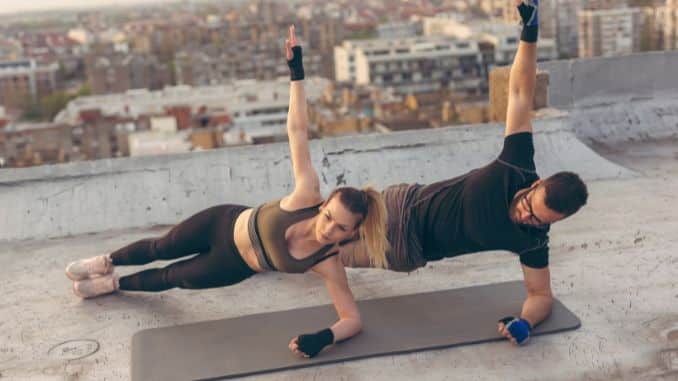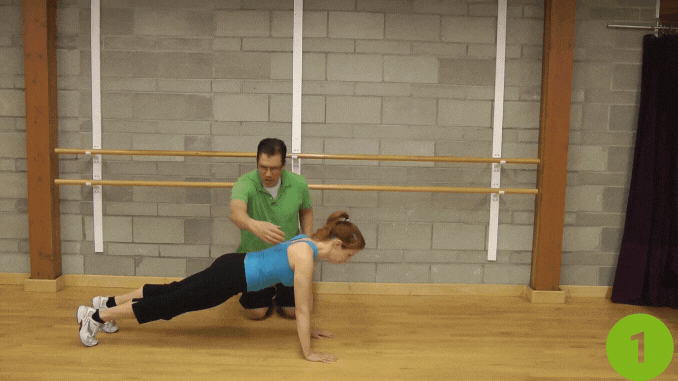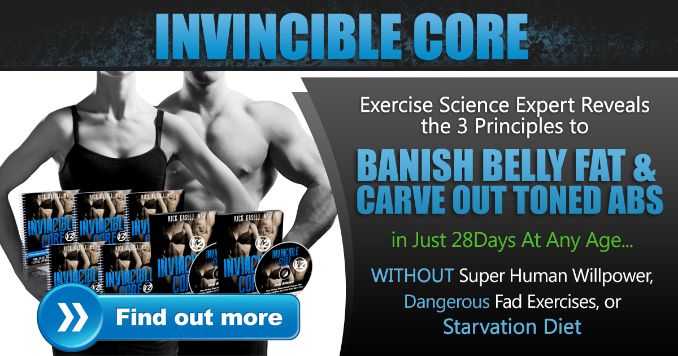Plank exercises variations are a simple yet powerful way to build strength and endurance, making them one of the most effective and versatile workouts.
Unlike traditional ab workouts that focus on isolated movements, planks engage multiple muscle groups at once, making them a full-body exercise that goes beyond just toning your midsection.
A 2021 study [1] shows that incorporating plank exercises variations into your workout routine can help target various muscle groups, prevent workout plateaus, and improve overall body stability.
While the basic plank is an excellent starting point, planks are not just a simple straight line there are many different types and variations for you to try out.
By regularly practicing planks, you can strengthen your core, improve your posture, and achieve better physical capabilities.
Since the core plays a crucial role in nearly every movement—whether it’s lifting, bending, or maintaining balance—developing a strong core through different plank exercises can lead to better performance in other workouts and daily activities.
Additionally, planks require no equipment, making them accessible to everyone, whether you’re at home, in the gym, or on the go.
In this article, we’ll explore the different plank exercises that can take your core training to the next level, These plank variations for core help you build strength, stability, and endurance while keeping your workouts fresh and engaging.
1. Forearm Plank

- Begin in a forearm plank position with your arms below your shoulders and your legs straight, maintaining good alignment with your head, shoulders, hips, and toes. Hold this position for several deep belly breaths, in through your nose and out through your mouth.
2. Knee Plank
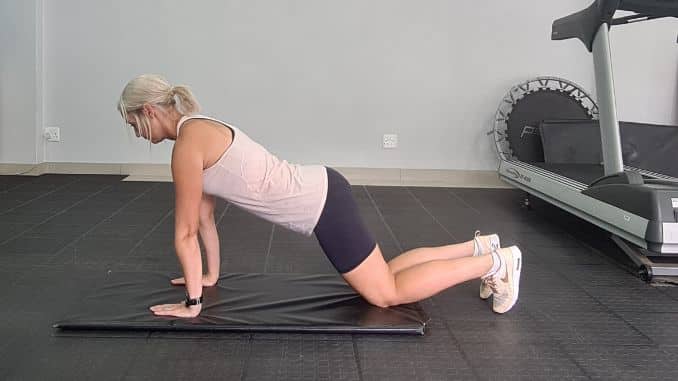
- Begin in a full-arm plank position on the floor, with your hands below your shoulders and your legs straight. Maintain good alignment with your head, shoulders, hips, and toes. Engage your core and slowly drop your knees to the floor. Hold the position for several deep belly breaths, in through your nose and out through your mouth.
3. Knee Plank Kickback

- Begin in a full-arm knee plank on the floor, maintaining good alignment with your head, shoulders, hips, and toes. Engage your core.
- Bend and kick one leg upward and hold the position for a couple of seconds. Lower your leg to return to the starting position, and repeat the movement on the opposite leg.
4. Knee Plank Reach
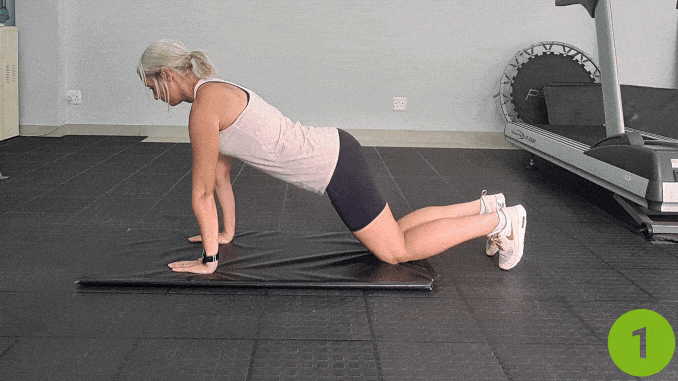
- Begin in a full-arm knee plank on the floor, maintaining good alignment with your head, shoulders, hips, and toes. Engage your core.
- Reach and extend one arm forward at shoulder height. Hold the position for a couple of seconds. Lower your arm down to return to the starting position and repeat the movement on the opposite side. Alternately repeat the movement with 10 repetitions.
5. Side Crunches with Leg Raise
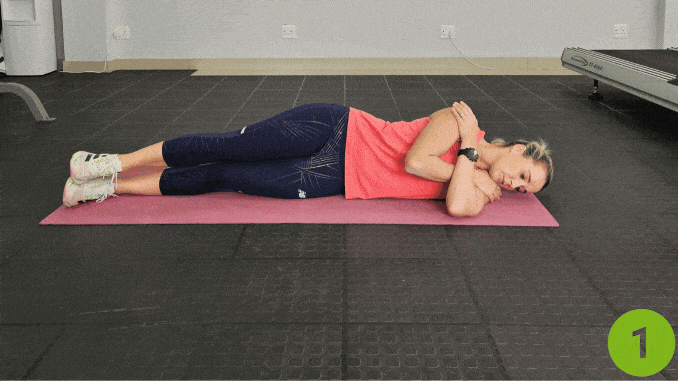
- Lie on your side on the floor with your legs straight and stacked together, maintaining good alignment with your head, shoulders, hips, and legs. Cross your arms in front of your chest.
- Engage your core and slowly lift your head and legs together while keeping your hip and upper body pressed on the floor. Hold the position for a couple of seconds. Relax to return to the starting position and repeat the movement. Complete 5 repetitions.
6. Forearm Side Plank
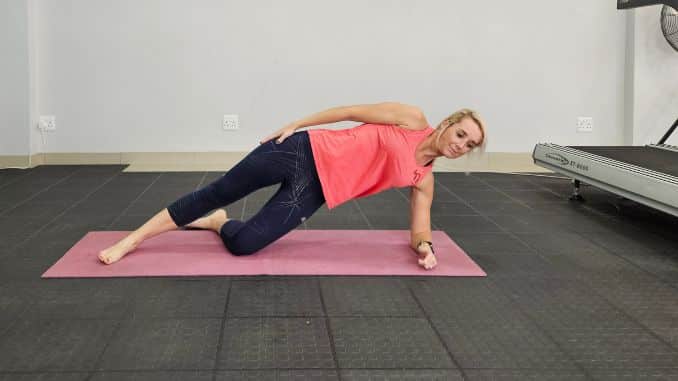
- Begin in a sideways position with one arm, maintaining good alignment with your head, shoulders, hips, and toes. Place your opposite hand on your hips while the other arm is used for balance.
- For the legs, use the outer leg to maintain balance while keeping the inner leg bent. Engage your core, then raise your hips. Hold this position for several deep belly breaths, in through your nose and out through your mouth.
7. Forearm Side Plank Arm Reach

- Begin in a forearm-side plank position with your legs straight, maintaining good alignment with your head, shoulders, hips, and legs. Engage your core.
- Bend your bottom leg and slowly lift your top leg off the floor while keeping it aligned with your hip. Then, slowly reach your arm overhead. Hold the position for a couple of seconds. Relax and repeat the movement on the opposite side.
8. Forearm Side Plank on the Knee
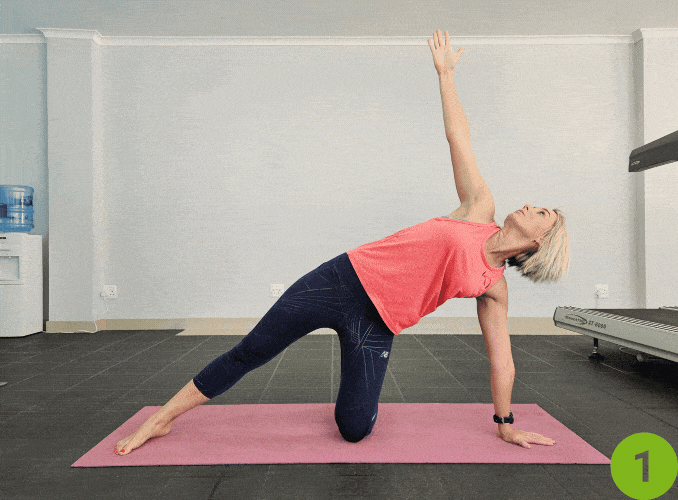
- From the Forearm Side Plank Arm Reach position, straighten your bottom arm to move into a full arm side plank position to lift your upper body upward. Lower your top leg and press your foot on the floor for support.
- Engage your core and extend your arm upwards with your gaze towards the ceiling. Hold the position for a couple of seconds. Relax and repeat the movement on the opposite side.
9. Full Plank

- Begin in a full-arm plank position on the floor, with your hands below your shoulders and your legs straight. Maintain good alignment with your head, shoulders, hips, and toes. Engage your core muscles and hold the position for several deep belly breaths, in through your nose and out through your mouth.
10. Full Plank Knee Drive
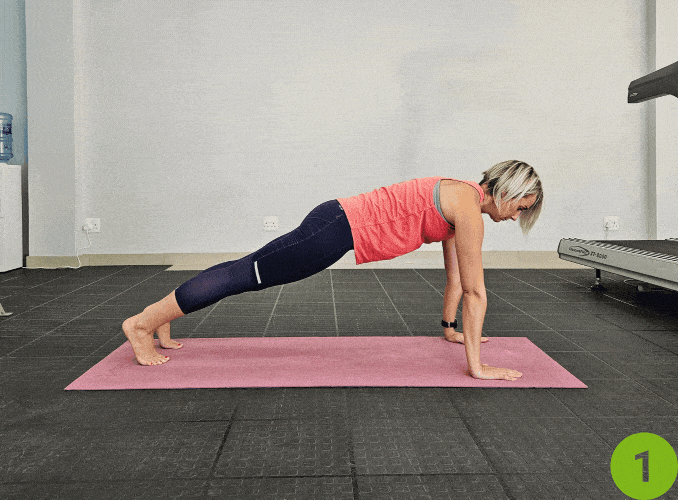
- Begin in a full-arm plank position on the floor, with your hands below your shoulders and your legs straight. Maintain good alignment with your head, shoulders, hips, and toes.
- Engage your core and drive one knee toward your chest. Hold the position for a couple of seconds. Then, return to the starting position and repeat the movement on the opposite side.
11. Full Plank Kickback
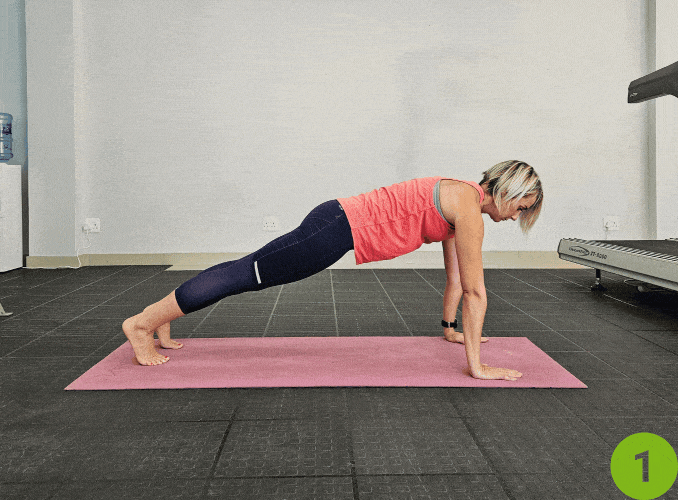
- Begin in a full-arm plank position on the floor, with your hands below your shoulders and your legs straight. Maintain good alignment with your head, shoulders, hips, and toes.
- Engage your core and lift one leg in a 45-degree angle. Hold the position for a couple of seconds. Lower your leg to return to the starting position and repeat the movement on the opposite side.
12. Full Plank Sidekick
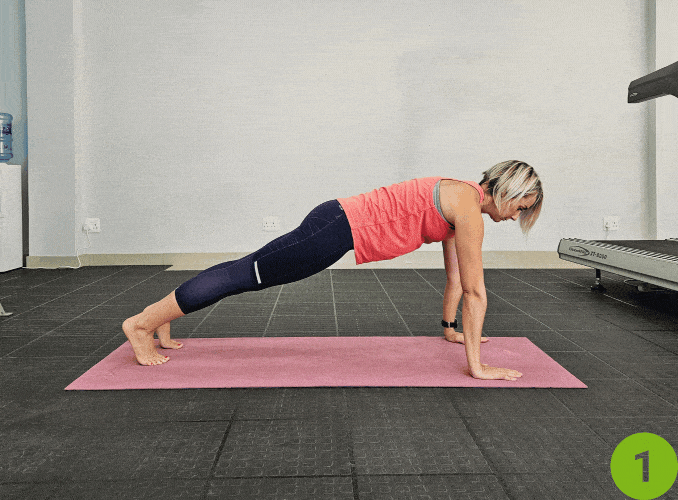
- Begin in a full-arm plank position on the floor, with your hands below your shoulders and your legs straight. Maintain good alignment with your head, shoulders, hips, and toes.
- Engage your core and move one leg to the side. Hold the position of several deep belly breaths, in through your nose and out through your mouth. Return to the starting position and repeat the movement on the opposite side.
13. Plank Ups
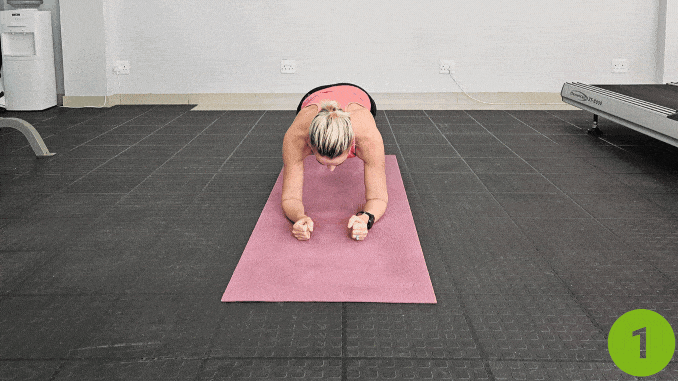
- Begin in a forearm plank position on the floor, with your arms below your shoulders and your legs straight. Maintain good alignment with your head, shoulders, hips, and toes.
- Engage your core, then slowly straighten your arms one at a time to move up into a full-arm plank position.
- Hold the position for a couple of seconds then gradually return to the forearm plank position. Repeat the sequence of movements with 10 repetitions.
14. Plank Ups from Knees
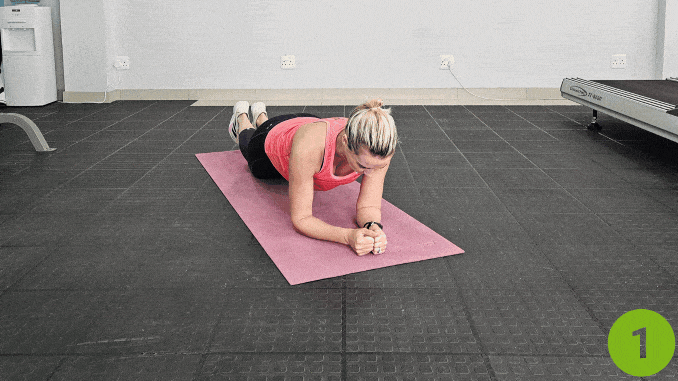
- Begin in a full-arm plank position on the floor, with your hands below your shoulders and your legs straight. Maintain good alignment with your head, shoulders, hips, and toes.
- Engage your core and slowly drop your knees to the floor. Then, straighten your arms into a full-arm plank position as you lift your feet off the floor. Hold the position for a couple of seconds. Lower your upper body to return to the starting position. Repeat the movement with 10 repetitions.
15. Forward Fold to Plank
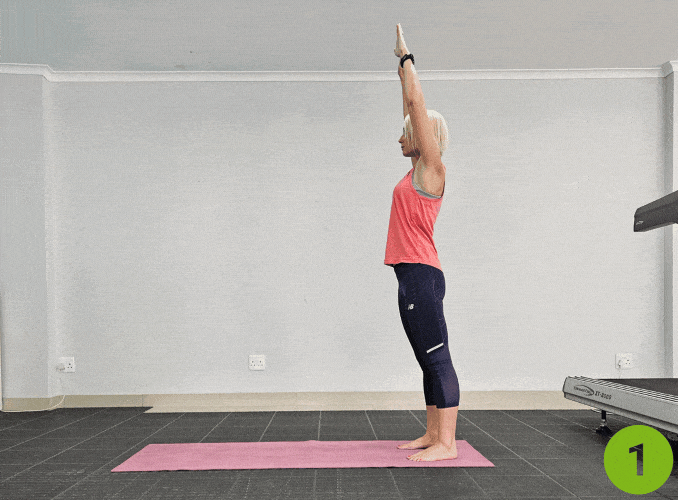
- Begin in an upright standing position with your feet hip-width apart, maintaining good alignment with your head, shoulders, hips, and legs.
- Raise both arms overhead, then slowly move into a full-arm position with your hands beneath your shoulders and your legs straight. Hold the position for several deep belly breaths, in through your nose and out through your mouth.
I love going through planks as I find them an excellent exercise to help with back injury recovery and prevention. However, doing standard planks can be a bit boring. So, here are four additional killer
variations of planks that can spice up your workout for a healthier core and back.
16. Plank With Hip Dips
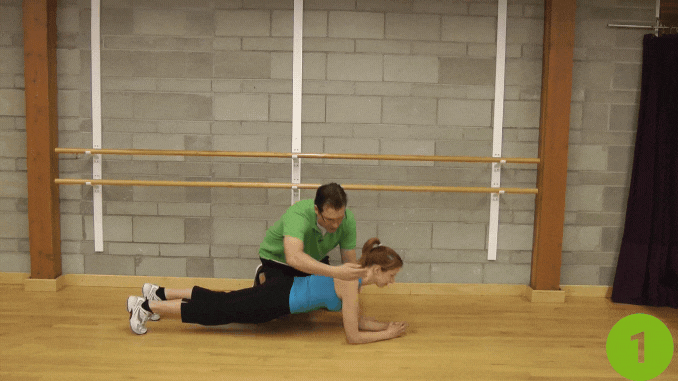
- Start with a front plank position. Keep your head, shoulders, hips, and feet in proper alignment and your elbows bent.
- Rotate slightly to one side, then dip the hip to touch the floor.
- Go back to the start position and repeat it with the other side.
It’s important to prevent excessive rotation in your lower back when lowering your hips. After a few repetitions, you might find this exercise somewhat challenging. It engages various core muscles that aren’t typically activated in static front planks, making it a great addition to your plank variations.
17. Single-arm Planks
A. Single-arm Planks From the Toes
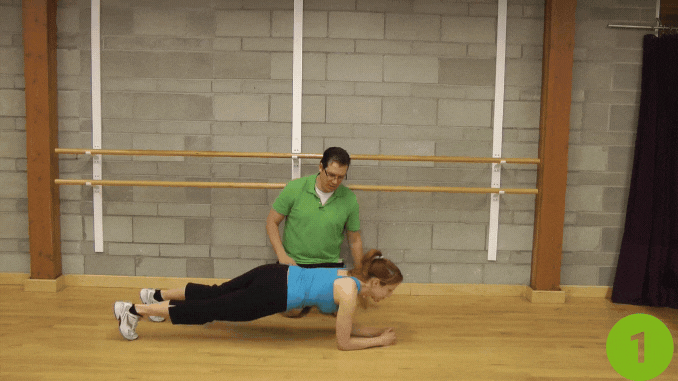
- Go into a front plank position. Keep your head, shoulders, hips, and feet in proper alignment and your elbows bent.
- Lift one arm slowly and reach it forward. Hold the position for a few seconds, then return to the plank position.
- Do the same movements with the other arm. The single-arm plank works on rotation with your core muscles.
B. Single-arm Planks From the Knees (Regressed)
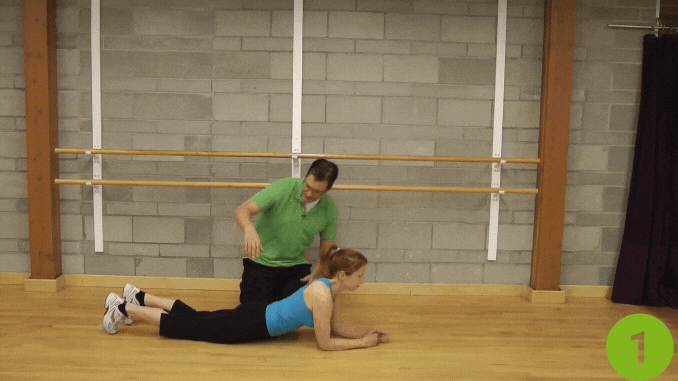
While the goal of this variation is to keep the plank straight, it is common for people to shift to their sides when reaching the arm forward. This happens especially when it’s your first time doing a plank. You can regress from the knees to focus on learning the exercise first. Then, progress from the toes.
18. Walking Planks
- Get into a plank position. Maintain proper alignment with your head, shoulders, hips, and feet with straight arms. Keep the abdominal area tight.
- Shuffle or walk without lifting your feet, twice to one side.
- Start walking with your hands and then move with your feet. Do the same movements in the other direction.
The walking plank works on your core muscles and the stability in your shoulders and hips.
19. Rocking Plank
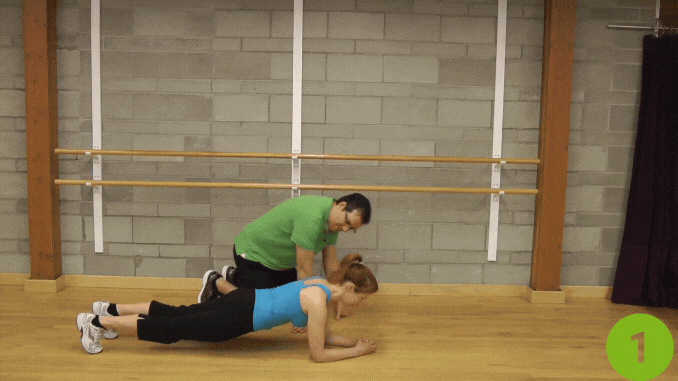
- Get into a plank position.
- Rock your body forward slowly by moving your toes forward, and then rock back by moving your toes backward.
- Maintain good alignment with your head, shoulders, hips, and feet with elbows bent.
Give these plank variations a go to keep a healthy back and prevent back pain and injury.
Plank Exercise Benefits
Planks are more than just a core exercise—they provide a full-body workout that improves strength, stability, and endurance.
In fact, according to Edward Phillips, Asst. Professor of physical medicine and rehabilitation at Harvard Medical School, doing planks can not only help with one’s back pain, but also strengthen one’s spine, stabilize the movement, and make you move more easily.
By adding plank exercise variations to your fitness routine, you can engage different muscle groups and improve overall functional fitness. Here’s a closer look at the key benefits of incorporating planks into your workouts:

1. Strengthens Core Muscles
The primary muscles engaged during planks include the rectus abdominis, deep core muscles, lower back muscles, and internal and external obliques.
A strong core is essential for your entire body, as it acts as the foundation for movement, balance, and posture.
Unlike crunches or sit-ups, which mainly target the front of the abs, planks work the entire core, making them one of the most effective exercises for building core strength.
2. Enhances Posture and Spinal Alignment
Poor posture can lead to back pain, muscle imbalances, and long-term spinal issues.
Planks help reinforce proper alignment by strengthening the muscles that support the spine, including the core, shoulders, and lower back.
Regularly performing plank exercises can improve posture by encouraging a neutral spine position, reducing slouching, and alleviating strain on the lower back, according to Daniel Bubnis, the internationally certified personal trainer from Scranton, Pennsylvania.
3. Improves Balance and Stability
A strong core is essential for maintaining balance and stability in everyday activities and athletic performance.
Different plank exercises, such as side planks or plank variations with leg lifts, challenge your balance by requiring you to engage stabilizing muscles.
This increased stability helps with coordination, reduces the risk of falls, and enhances performance in activities like running, weightlifting, yoga, and sports.
4. Helps with Injury Prevention and Athletic Performance
Weak core muscles can lead to improper movement patterns, increasing the risk of injuries, especially in the lower back and hips.
Planks strengthen the core muscles that support and protect the spine, reducing the likelihood of strains and injuries.
Additionally, for athletes, a strong core enhances performance in sports by improving agility, power, and endurance.
Whether you’re lifting weights, running, or playing a sport, planks help develop the foundational strength needed for better movement efficiency and injury prevention.
5. Helps with Injury Prevention and Athletic Performance
In 2023 study [2], plank exercises offer significant benefits for older adults by improving respiratory capacity, enhancing physical fitness, and boosting immune function (Park, et. al. 2023).
They strengthen the core muscles involved in breathing, helping to increase oxygen intake and reduce breathlessness, which improves endurance and energy levels.
Planks also enhance overall strength, stability, and balance, reducing the risk of falls while protecting the spine and preventing injuries.
Additionally, the Men’s Health Journal [3] mentioned that regular plank practice promotes better circulation of immune cells, supporting a stronger immune system and helping older adults maintain their health and mobility. (Lee, et. al. 2022)
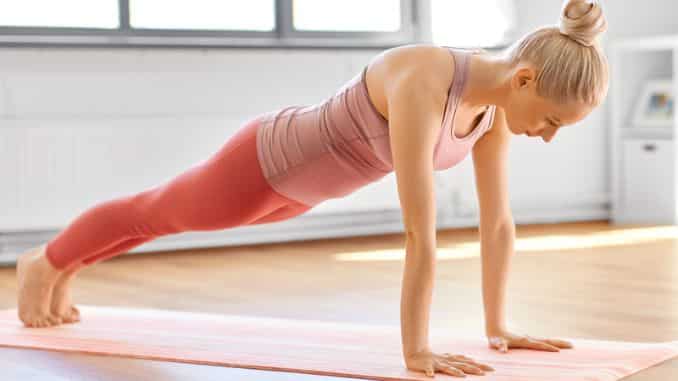
Conclusion
Incorporating different variations of planks into your fitness routine is one of the best ways to build a stronger core, improve posture, and boost overall body strength.
Whether you’re a beginner or an advanced fitness enthusiast, there’s a plank variation that can challenge your muscles and help you reach your goals.
Remember, consistency and proper form are key to getting the most out of these exercises.
Start with the basics, gradually progress to more advanced variations, and don’t forget to mix things up to keep your workouts exciting and effective.
A strong core benefits you in every movement—whether it’s working out, playing sports, or just going about your daily life.
So, roll out your mat, try these plank variations, and experience the difference they can make.
Now it’s your turn: Give these exercises a try and see how they transform your strength and stability!
Build an Unstoppable Core! Strengthen, sculpt, and stabilize with Invincible Core. Get Started Today!
FAQs
How long should I hold a plank?
The ideal plank duration depends on your fitness level. Beginners can start with 15-30 seconds per set, intermediate exercisers can aim for 30-60 seconds, and advanced individuals can challenge themselves with 60+ seconds or longer while maintaining good form.
How often should I do plank exercises?
Plank exercises can be performed 3-5 times per week as part of your core workout routine. For best results, combine different plank variations to engage various muscle groups.
Are planks better than crunches for core strength?
Yes, planks are more effective than crunches because they engage the entire core—including the abs, obliques, lower back, and stabilizing muscles—while crunches primarily focus on the front abdominal muscles.
Can planks help reduce belly fat?
According to 2023 study [4], Planks help strengthen and tone your core, but they don’t directly burn belly fat. To lose fat, you need a combination of plank exercises, full-body strength training, cardio, and a healthy diet (Huang, et. al. 2023).

